1Solar energy – an important source of energy
In recent years, the demand for solar energy systems has increased, and it is clear that solar energy will become an increasingly important source of energy in Norway in the years to come.
In this guide, solar energy systems are defined as either photovoltaic systems or solar collectors that are established on buildings. This includes both building-adapted and building-integrated solutions. The guide does not address ground-mounted solar energy systems. Small ground-mounted systems that are subject to application pursuant to the Planning and Building Act, and systems subject to licencing are therefore not included in this guide.
In 2021, the Directorate for Cultural Heritage launched a climate strategy for the entire cultural environment field up to 2030. The strategy presents two important objectives that will help us reduce greenhouse gas emissions:
- Preserve and use buildings in a manner that will reduce greenhouse gas emissions and safeguard cultural environments.
- The energy performance in existing buildings will be improved so that greenhouse gas emissions are reduced and culturally and historically important values are safeguarded.
The two objectives are closely linked: We will take care of and use the buildings we have in a good way, and it is important to make them more energy efficient in order to reduce greenhouse gas emissions. Making buildings energy efficient involves reducing the need for energy by sealing air leaks, installing secondary glazing, or installing heat pumps. These are measures that should be implemented before assessing the need to produce electricity or heat using a solar energy system.
What are cultural heritage values?
Cultural heritage values (or culturally and historically important values) are values that are attributed to a cultural monument or environment. The values are often divided into three groups: knowledge, experience and utility.
Knowledge value is the value a cultural monument or environment has as a source of knowledge. In the same way that one can read and extract information from a book, one can read and extract information from a cultural monument or environment. For example, it might involve craft techniques, the use of materials, ways of life and utilisation of resources in a time and society that was different from ours.
Experience value is about how cultural monuments and cultural environments can affect us and give us important experiences. Cultural monuments and cultural environments give cities and places their distinctive character. They are a resource and a common good that should be managed so that these values can be experienced both today and in the future. For local communities and businesses, cultural environments are also important. They can create a basis for cultural experiences, business development and tourism.
Utility value involves cultural monuments getting a broadened value from being in use, and that we can utilise them as resources in society. Cultural monuments that are not in use deteriorate, so protection through use is an important principle in the management of our culturally and historically important buildings. In addition, it is more climate-friendly to use and make existing buildings more energy-efficient than to build new ones.
In addition to reducing energy demand, the production of local and renewable energy will be an important contribution to the process of phasing out fossil-based energy. The potential for utilising solar energy is huge, and many roof surfaces are well suited for solar energy systems. This applies in particular to commercial buildings, apartment buildings, industrial facilities and other large types of buildings, preferably with a flat roof.
With good adaptation, solar energy systems can also work well on roof surfaces that are more visible. Technological developments are taking place rapidly, and new solutions are constantly emerging on the market that provide greater opportunities for visual adaptation.
At the same time, it is important to be aware that a solar energy system can have major consequences for a building, both technically and visually, if it is not designed correctly. With regard to listed buildings, there is also a risk that culturally and historically important values will be lost. One must take the distinctive character of each individual building as a starting point and assess how any changes will affect the building. It is therefore important that cultural environment management authorities and the planning and building application officers possess knowledge about what needs to be mapped and assessed before solar energy systems can be established on buildings that are listed and worthy of protection.
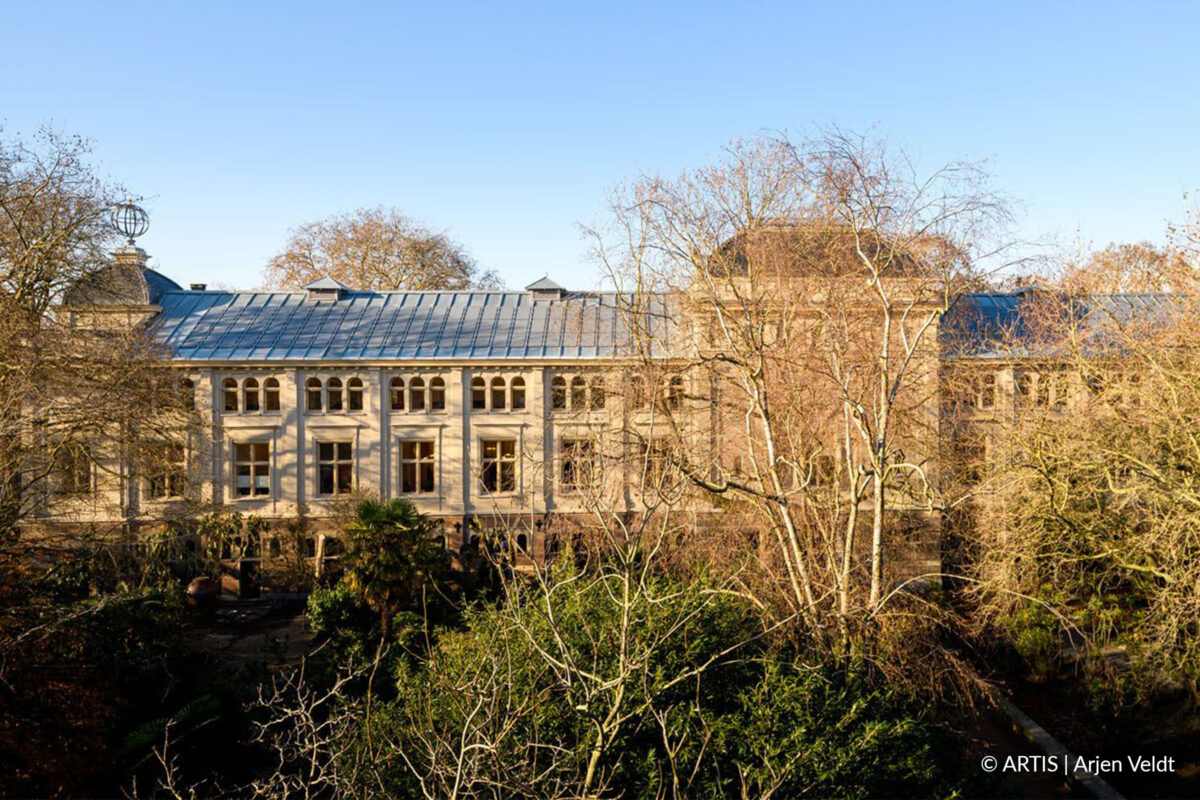
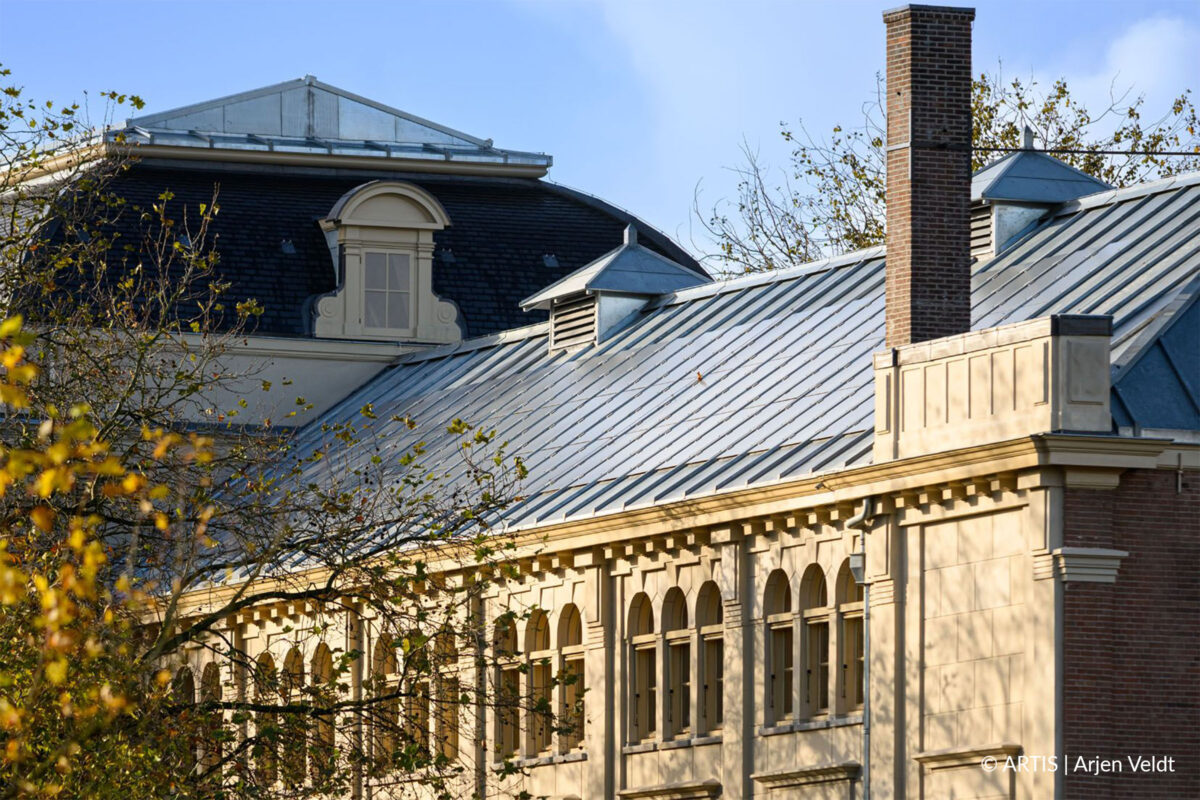
The guide will contribute to the quality establishment of solar energy systems
The purpose of the guide is to provide good advice about the assessments that should form the basis for a decision to establish solar energy systems on buildings that are listed and worthy of protection.
General advice is also given regarding good visual adaptation. There are many buildings in Norway that are not formally protected. Through Section 29-2 of the Planning and Building Act, municipalities must ensure that each and every project pursuant to the Act are designed and executed in such a way that they “maintain good visual qualities both inherently and with regard to its function and its constructed and natural surroundings and location. With regard to projects that are linked to the exterior of an existing building, municipalities may, as part of their assessment, place emphasis on taking important historical, architectural and other cultural values into consideration”.
The guide will contribute to the establishment of solar energy systems in a way that safeguards the quality of our surroundings, and with respect for culturally and historically important values. The target group for the guide is mainly cultural environment management authorities and municipal planning and building application officers, but the content will also be relevant for owners of listed buildings and the solar energy industry.
2Solar energy – how to utilise it?
Solar energy potential in Norway
In 2021, solar power accounted for only one thousandth of Norway’s total power production. However, the potential for utilising energy from the sun is far greater. Together with other renewable energy sources and making energy use more efficient, solar energy is an important resource in the work of phasing out fossil-based energy sources.
The potential for solar power depends on solar radiation. In Norway, solar radiation is better than many might think: On a horizontal surface, annual solar radiation is between 600 and 1000 kWh/m2. Most solar radiation occurs in Southern and Eastern Norway, and this is where the potential for utilising solar energy is greatest on a national basis. Norway also has an advantage when it comes to solar panels, which work best at relatively low temperatures. Possibilities exist for utilising energy from the sun in a better way than we do today. Commissioned by the Norwegian Solar Energy Cluster, Multiconsult has calculated the technical potential for solar power on available roofs and facades in Norway. They estimate the potential to be approximately 87 GWp (Giga Watt peak), which corresponds to around 65.6 TWh per year. By comparison, developed hydropower amounts to approximately 138 TWh per year.1 This is a theoretical calculation, and consideration for buildings that are listed and worthy of protection is one of several factors that play a role in the assessment of where it is possible to establish solar energy systems. In the coming years, comprehensive planning and mapping of suitable buildings will be an important task for all who manage and are responsible for both large and small buildings.
What can municipalities do? An example from Oslo
Many municipalities are now looking at how they can work to reduce greenhouse gas emissions and contribute to improving the energy efficiency of existing buildings. The City of Oslo wants more people to produce their own electricity or heat using solar energy systems. They have therefore mapped all the buildings in the municipality and developed a solar map that illustrates how suitable the various roof surfaces are. The solar map also shows whether buildings are on the Yellow List (zoned for protection or as a listed building). Furthermore, the City of Oslo has prepared a digital guide that will make it easier for developers to clarify whether they must apply for a building permit. The processing of building applications will ensure that the system satisfies technical and visual requirements, and ensure that considerations are taken regarding neighbours. The guide also provides information about opportunities to apply for financial support, and pictures showing examples of different solutions.
The Cultural Heritage Management Office in Oslo uses the solar map in its case processing. In order for the Cultural Heritage Management Office in Oslo to assess such systems on buildings worthy of protection, they require roof surfaces to be ‘good’ or ‘very good’ for photovoltaic systems or solar collector systems. This does not necessarily mean that permission will be granted for solar energy systems on all roof surfaces that are good or very good, but it is not practical to consider installing solar energy systems on roof surfaces that receive little solar radiation.
1Market report. Norwegian solar power 2022 – domestic and export. Multiconsult commissioned by the Norwegian Solar Energy Cluster.

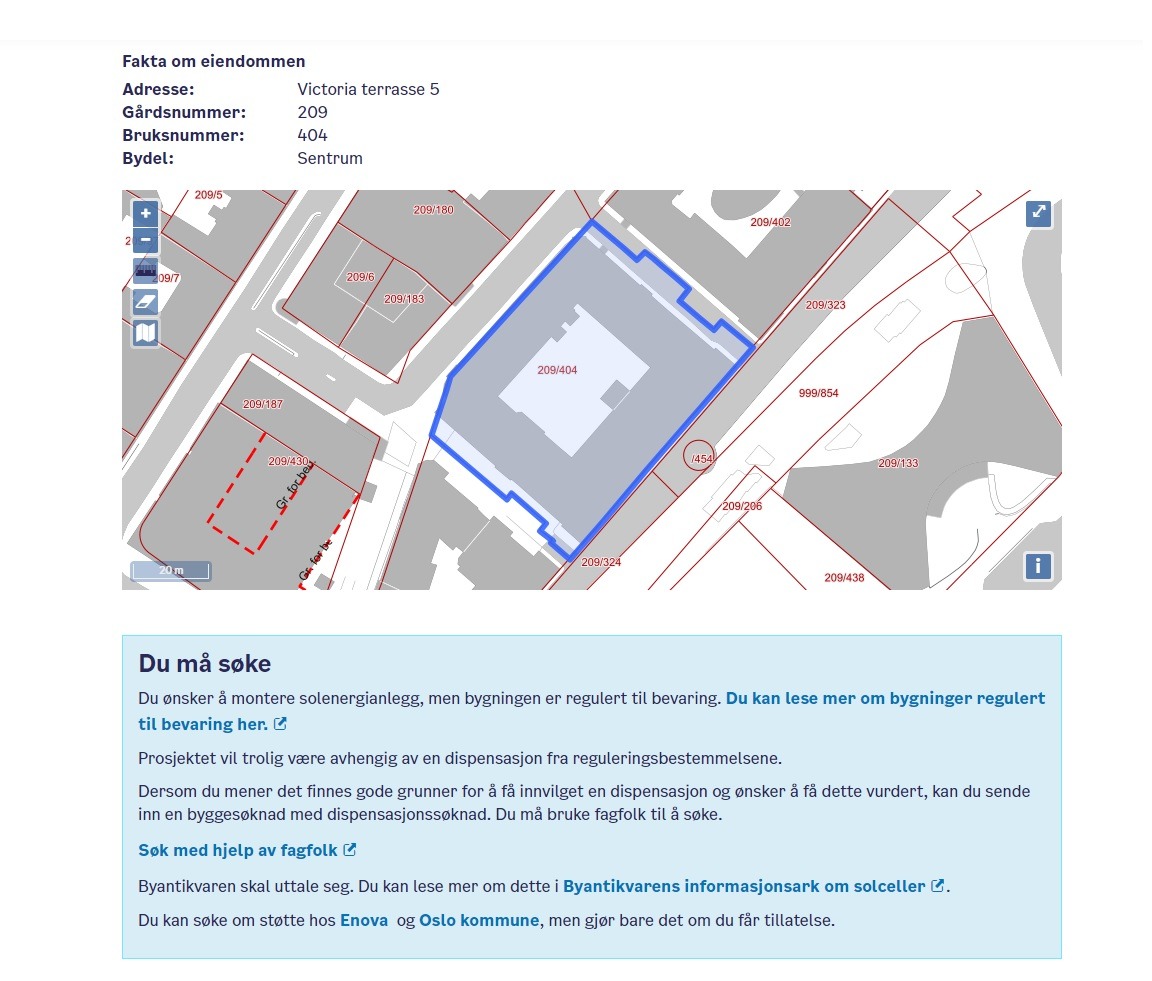

What can the Government do? An example from Statsbygg
Statsbygg has worked systematically on mapping the roof surfaces of the properties they manage. The mapping had a broader purpose than merely mapping roof surfaces suitable for energy production. It would also assess the possibility of utilising existing roofs for stormwater management and the roof’s possible contribution to biodiversity. The work identified certain criteria that will be decisive for whether a roof should be developed for energy production or as a green roof. In a densely populated urban area with many hard surfaces in the surroundings and little green structure, green roofs may be more relevant than energy production. In places with a larger element of green structure and fewer hard surfaces, energy production will take precedence.
The mapping identified a roof area of 1 million square metres that is particularly suitable for energy production. The mapping serves as a basis for installing systems for energy production on roof surfaces in the future.
Photovoltaic systems
Photovoltaic systems produce electricity. A solar panel consists of a semiconductor that converts sunlight into electricity through a photovoltaic process. Most solar panels on the market today are made of silicon.
Building Applied Photovoltaics (BAPV)
Photovoltaic systems installed on the outside of buildings, either on the facade or on the roof, are abbreviated to BAPV (Building Applied Photovoltaics).
Building Integrated Photovoltaics (BIPV)
Photovoltaic systems that are integrated into facades or roofs are abbreviated to BIPV (Building Integrated Photovoltaics). Building Integrated Photovoltaics replace other building materials, and there is a rapid development in the possibilities for adaptation and design. Both solar roof tiles and facade panels in different colours and designs can be found on the market today.
Solar collectors
Solar collectors produce heat. A solar collector absorbs the energy of solar radiation and converts it into heat. The heat is transported from the solar collector to a heat storage system, usually via water or air. Solar collectors can be integrated into the roof, mounted on the roof or in frames on a flat roof.
The two most common forms of solar collectors are liquid-based, planar solar collectors and vacuum tube solar collectors.
Energy production and reduction of greenhouse gas emissions
Solar energy systems can be a good solution for producing one’s own electricity or heat. At the same time, there are many other measures that have a direct effect on energy consumption in older buildings. The Directorate for Cultural Heritage recommends using Norwegian Standard NS-EN 26883:2017 ‘Conservation of cultural heritage. Guidelines for improving the energy performance of historic buildings’ to map relevant energy efficiency measures for individual buildings. In many cases, there will be several other measures that have a major effect and have less visual and technical consequences for the building than solar energy systems.
Installing a heat pump is a very good measure for efficient heating. The Directorate for Cultural Heritage recommends this before other, more comprehensive measures are implemented. Read more about heat pumps in buildings that are listed and worthy of protection in the Directorate for Cultural Heritage’s guide called Advice on heat pumps in buildings that are listed and worthy of protection.
If solar energy systems are to be established, it is important that the project contributes to the overall goal of producing local and renewable energy and cutting greenhouse gas emissions. Greenhouse gas emissions and energy consumption from the production of the solar energy system are part of the total greenhouse gas accounts throughout the system’s service life. The same applies regarding the disposal and recycling of the waste when the system needs to be replaced. The Directorate for Cultural Heritage therefore recommends choosing a producer that can account for greenhouse gas emissions and natural resource consumption during the production phase, and that can provide a presentation of the total amount of energy and greenhouse gas emissions saved during the estimated service life.
3Solar energy system: a project subject to application
For listed buildings or buildings that are protected pursuant to the Planning and Building Act, the establishment of solar energy systems is always subject to application. If measures are to be implemented on these types of buildings, separate application rules apply, and special requirements are imposed on design and visual qualities. See the chapters Solar energy systems on buildings protected pursuant to the Planning and Building Act and Solar energy systems on listed buildings.
On all other existing buildings, the establishment of solar energy systems is generally a project subject to application. This is because a solar energy system is defined as a technical installation pursuant to Section 20-1 (f) of the Planning and Building Act and will in many cases also be a facade change, cf. Section 20-1(c). Projects mentioned in Section 20-1 are subject to application pursuant to Section 20-2.
In some cases, the establishment of solar energy systems may be exempt from being subject to application. The exemption is defined in Section 4-1 (e), point 4 of the Regulations relating to building applications (SAK10). Here, the regulations allow for simple installations to be installed and modified within one occupancy unit or fire cell without requiring an application and permit. However, there are some factors that are important to be aware of: If the establishment of the system leads to a facade change, an application is still required. In addition, the project may not be in conflict with the land-use part of the municipal master plan and the zoning plan, or other regulations.
Requirements for visual qualities and considerations regarding historical, architectural and cultural values
Section 29-2 of the Planning and Building Act ensures that all projects pursuant to Chapter 20 of the Act are designed and executed with good visual qualities. When the project concerns the facade, the municipality can also place emphasis on historical and architectural qualities. This applies to all projects, regardless of whether they are subject to application or not.
Section 29-2 of the Planning and Building Act. Visual qualities
“Pursuant to chapter 20, each and every project shall be designed and carried out so that in the opinion of the municipality, it maintains good visual qualities both inherently and with regard to its function and its constructed and natural surroundings and location. With regard to projects that are linked to the exterior of an existing building, municipalities may, as part of their assessment, place emphasis on taking important historical, architectural and other cultural values into consideration.”
What constitutes “good visual qualities” must be based on professional assessments and not on individuals’ perceptions of ‘pretty’ or ‘ugly’. Some guidelines are given in the actual paragraph itself. The project must have good visual qualities both inherently and with regard to its function and its constructed and natural surroundings and location. This means that the project, in this case a solar energy system, must take into consideration the building’s design in terms of dimensioning and expression of form, use of materials and colour choices.
The project must also be in harmony with the surroundings. In a holistic area with a lot of uniform buildings, a poorly adapted solar energy system will trigger requirements pursuant to Section 29-2 more quickly than in a more mixed and varied environment. It may, for example, apply to areas on local conservation lists, World Heritage Sites or Cultural environments and landscapes of national interest2.
For existing buildings, municipalities may also place emphasis on the historical, architectural and cultural values of the building. There are several factors that are involved in the assessment of whether the building’s facade has cultural, historical or architectural values, and which may be relevant to place emphasis on:
- whether the building represents local building traditions or a stylistic period
- whether the building reflects technical innovations, for example in construction or choice of materials
- whether the building can contribute as a source of historical knowledge to aspects such as building history or architecture – it will therefore be important whether the building has retained its original facade expression
- what state the building is in
If municipalities assess that the project does not have good enough visual qualities, or that the project does not take historical, architectural or other cultural values into sufficient consideration, Section 29-2 provides the legal basis for rejecting the application. However, a building that is SEFRAK registered or listed on a local conservation list isn’t sufficient. These factors may be relevant in the grounds given, but such registration is not sufficient as independent grounds for rejection. Municipalities must make a professional, specific and independent assessment of the building’s cultural heritage value if they wish to reject a project pursuant to Section 29-2.
2Cultural environments and landscapes of national interest provides a comprehensive overview of cultural environments in cities and populated areas, and landscapes of national interest. The overview builds on the NB! and KULA registry, and the goal is to ensure sustainable management of the cultural environments.
| Type of building | Contact |
| Listed buildings/facilities | County authority or the Sámi Parliament |
| Listed buildings/facilities on the Directorate for Cultural Heritage’s list3 | The Directorate for Cultural Heritage |
| Buildings protected pursuant to the Planning and Building Act | Municipality. The county authority or the Sámi Parliament will comment on the matter |
| Buildings located in one of Norway’s
World Heritage Sites / Buffer Zone |
World Heritage Coordinator for the World Heritage Site in question |
| Buildings listed or located in an area registered as a Cultural environment and landscape of national interest. | Municipality. The county authority or the Sámi Parliament will comment on the matter |
| Existing buildings without protection | Municipality |
For more information about the division of responsibility in cultural environment management: About cultural environment management – The Directorate for Cultural Heritage
4The Directorate for Cultural Heritage’s general advice for good visual adaptation
If solar energy systems are to be established on buildings that are listed and worthy of protection, the system must be visually well adapted to the building. For buildings that are not protected, municipalities are responsible for ensuring that projects pursuant to the Planning and Building Act are designed and executed in such a way that they have good visual qualities.
The Directorate for Cultural Heritage has prepared some general advice on how solar energy systems can be properly planned.
Think adaptation
What constitutes a good adaptation will vary from building to building, but it is still possible to give some general advice.
Take into account the scale of the building to avoid the solar energy system being perceived as oversized and dominant. The size of the solar panels should match other building components, such as windows, doors and/or roofing.
Try to create as little contrast as possible between panels and existing roofs. Ideally, a red tile roof should have red panels, a black roof black panels, etc. In addition, the backsheet and framing should be the same colour as the panels. For example, avoid light-coloured steel frames on black panels – it creates a contrast that makes the panels more prominent.
Take into account the architectural style of the building and assess what the building can tolerate regarding major changes in expression. A modernistic high-rise building or an industrial facility has different architectural qualities than a Swiss cottage, and changes and additions should be based on these qualities.
Choose a solar energy system with a matt finish
The solar energy market has many suppliers and alternatives. To avoid distracting reflections and instead ensure that the solar energy system blends into its surroundings as inconspicuously as possible, it is recommended to choose panels with a matt surface.
Choose the placement and systematisation of panels carefully
The manner in which the panels are placed and systematised on the roof is of great importance with regard to their appearance. Good symmetry can be decisive for how the system is perceived. Another good approach might be to arrange the panels in a holistic, square formation. Avoid installing some panels vertically and others horizontally, it creates a rather disorganised look.



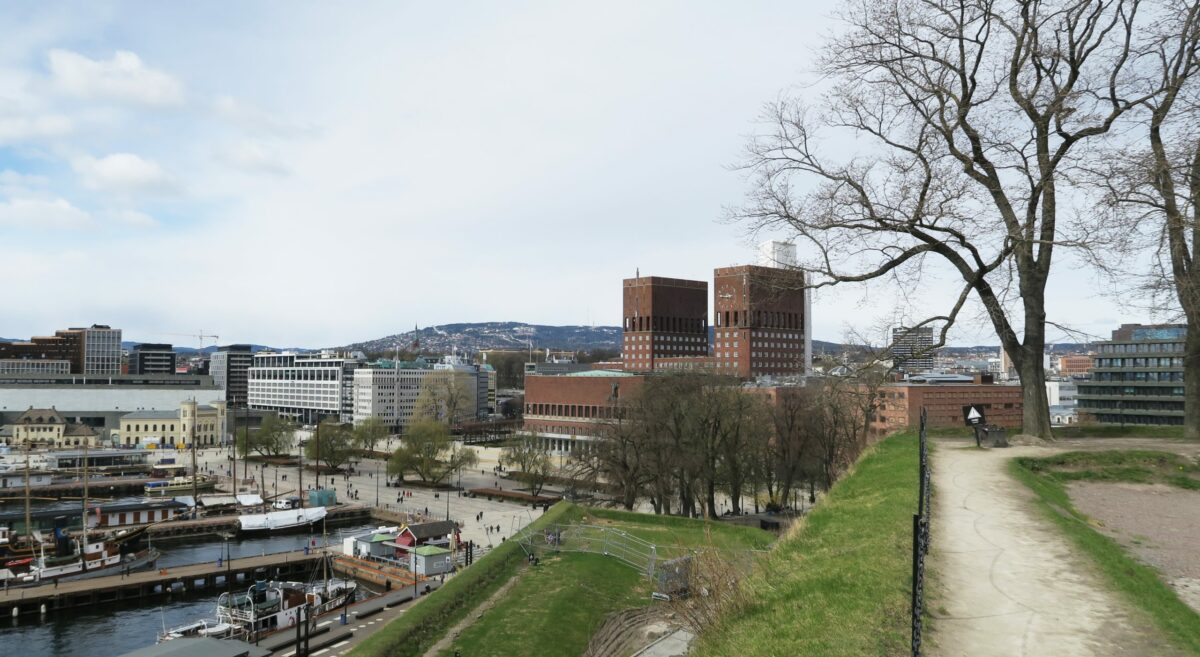
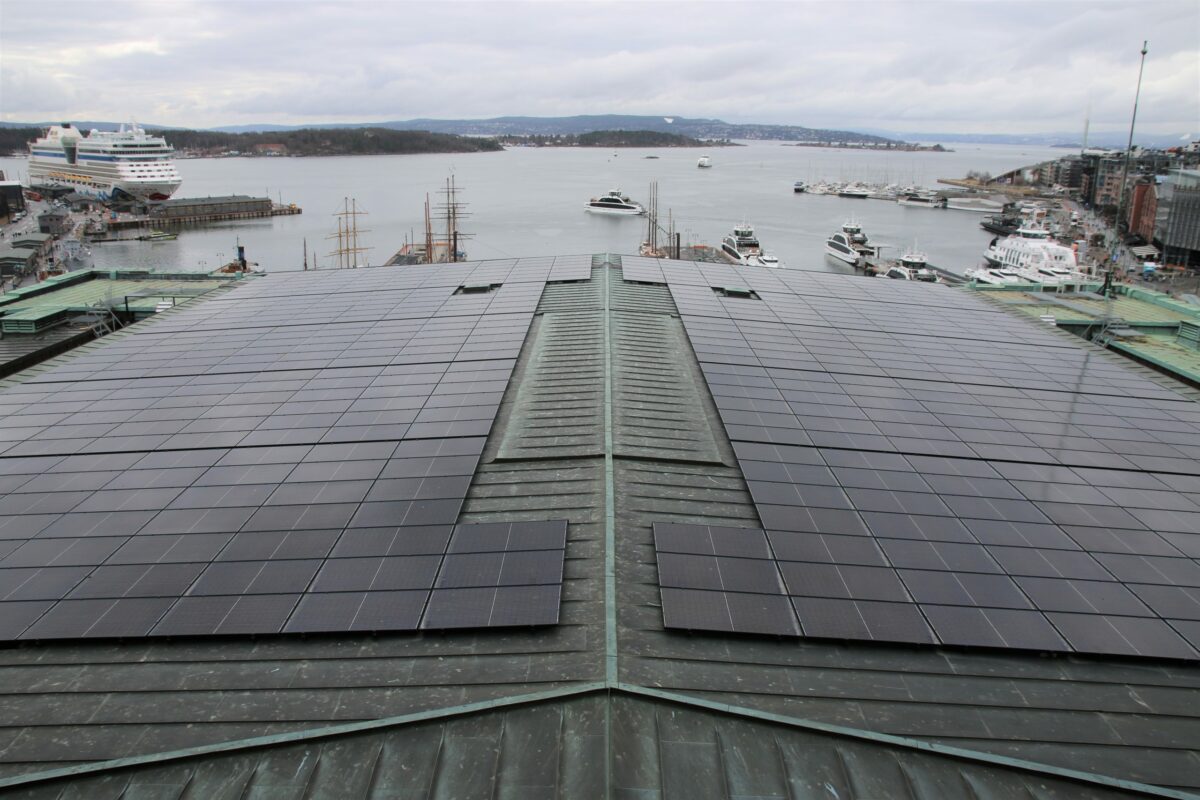
5Technical assessments
Solar energy systems on buildings are divided into two types: photovoltaic systems and solar collectors. Both systems utilise the sun as a source of energy. In short, the difference is that photovoltaic systems produce electricity, while solar collectors produce heat. This means that they differ from each other in the way they utilise solar energy, and that there will be some technical factors and assessments they have in common, and some that only apply to either photovoltaic systems or solar collectors.
In this chapter, we briefly present the technical factors that will play a particular role in a study of solar energy systems on buildings that are listed and worthy of protection. For more detailed information about the various points and the technical execution of the project, other, more industry-specific guides and resources are available.
Design: SINTEF Building Research Design Guides
For more detailed information about the design of photovoltaic systems and solar collectors, the Directorate for Cultural Heritage recommends using the SINTEF Building Research Design Guide 321.231 Design of photovoltaic systems on buildings and 552.455 Water-based solar collectors. Function and energy yield.
NEK 400: Installation requirements for photovoltaic systems
NEK 400 is a group of standards that deal with the design and execution of low-voltage electrical installations. Together with the regulations on low-voltage electrical installations and regulation guidelines, the minimum safety level for such installations is specified.
There is a separate chapter on photovoltaic systems in the group of standards, NEK 400 7-712.
What effect can a solar energy system produce?
The efficiency of a solar energy system is the ratio between the amount of solar radiation that hits the panels and the amount of electricity or heat the system is able to produce.
Generally speaking, the efficiency of a solar energy system depends on several factors. Factors such as cardinal direction, the angle at which the system is installed, and the influence of shadows from trees, neighbouring buildings, mountains and snow will affect solar radiation. To achieve a good effect, the solar energy system should be installed facing south, west or east.
Requirements for the design and placement of the solar energy system may affect its efficiency. For example, the roof surface with the best sun exposure may not be particularly suitable after cultural heritage factors have been taken into consideration. The developer must then assess how much effect an alternative location of the system will provide, and whether it is worth the investment. There may also be requirements stipulating that the panels must be the same colour as the roofing, red for example. Red panels are currently less effective than standard black panels, but will still be a good compromise in many cases.
Photovoltaic systems:
- How efficiently solar panels convert solar energy into electricity depends on the type of technology in the panels.
- Solar panels produce the most electricity at low temperatures.
Solar collectors:
- The temperature of the liquid in solar collector is important: Low input temperature provides higher efficiency.
- The insulating capacity of the solar collector ensures that as little heat as possible escapes.
- The external layer of the solar collector determines how much solar radiation passes through.
Can the structure withstand the load?
It is important to investigate whether the building structure, and especially the roof, can withstand the extra weight load of a solar energy system. Currently, a standard solar panel weighs approximately 12 kg/m2, and a standard flat plate solar collector weighs between 15 and 25 kg/m2. Before a solar energy system is established, technical and static assessments of the building’s physical tolerance limit must therefore be carried out.
Snow can easily accumulate on the roof above the solar energy system, which can further increase the weight load. In addition, the developer should ensure that the solar energy system itself can withstand loads produced by wind and snow, as well as take into account more extreme weather as a result of climate change.
It may be a good alternative to establish a solar energy system on newer, adjacent buildings, which may withstand both the weight load and the visual change better.
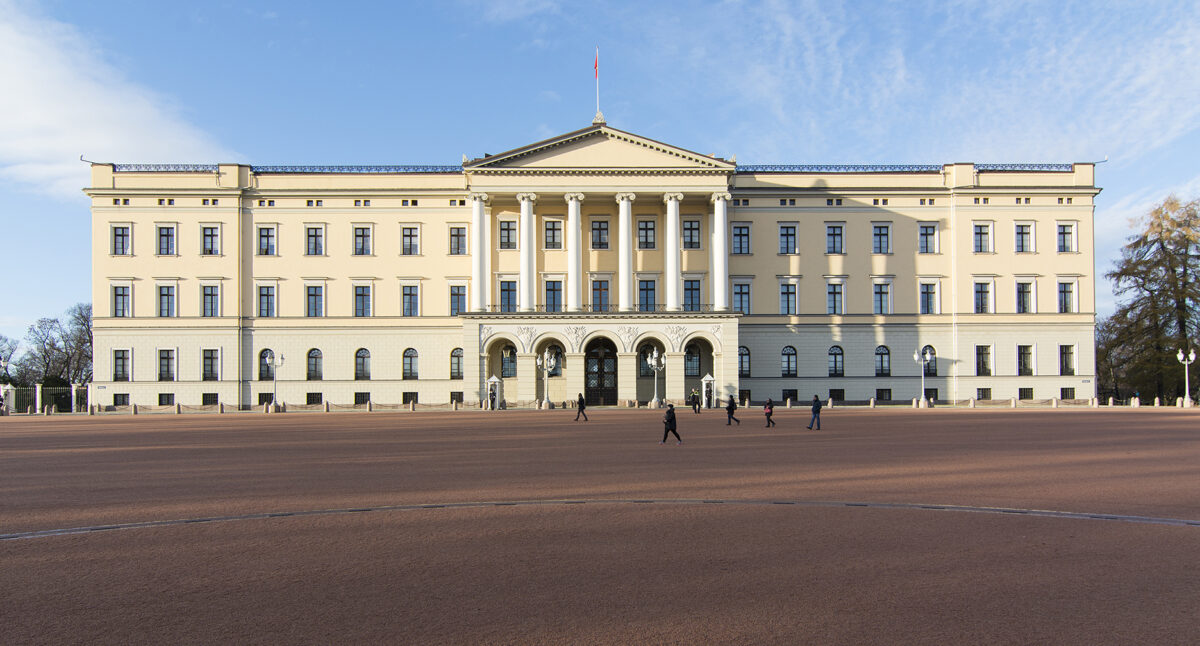
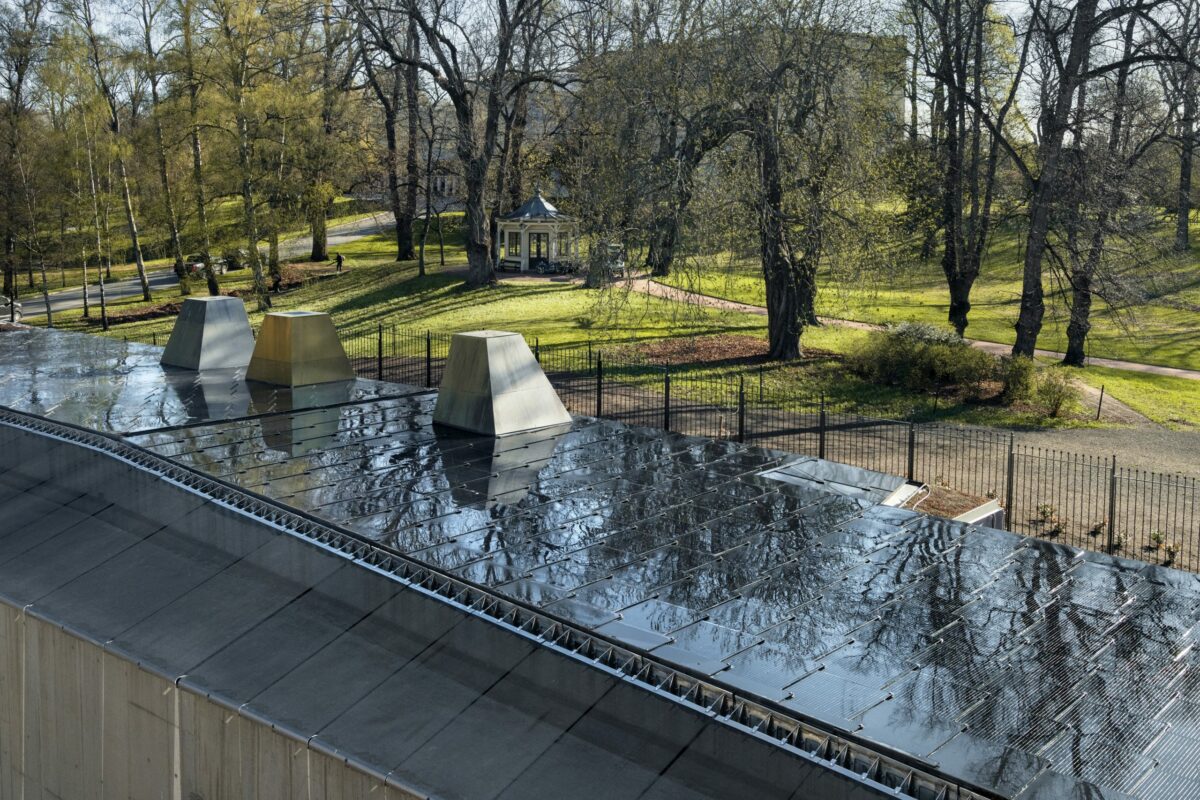
How old is the roof and what condition is it in?
A solar energy system has an estimated lifetime of 20–30 years, but often works longer than that. It is therefore important that the roof on which the system will be established is in good condition. There should be no need for improvements or extensive maintenance during the time the solar energy system is installed on the roof.
Generally speaking, integrated solar energy systems, and perhaps especially solar panels which replace other roofing materials, can be a solution. This especially applies in cases where the roof needs to be replaced anyway. For buildings that are listed and worthy of protection, the cultural heritage value of traditional roofing is considered to be very high. On such buildings, it is important that a solar energy system does not replace or ruin the original roofing. In some cases, integrated solutions may be a possibility, but this must be decided by the cultural environment management authorities in each individual case.
Is installing a photovoltaic system a fire hazard?
A photovoltaic system is an electrical installation, and all contact points in an electrical installation are a potential source of fire. Fire safety should be included in the planning of a photovoltaic system from the start, and the quality of assembly and connection work is important. Installation of photovoltaic systems is pursuant to the Electrical Supervision Act, and as a general rule must only be carried out by enterprises registered in the Norwegian Directorate for Civil Protection’s registry of enterprises performing work relating to electrical installations or repairs to electrical equipment.
Regulations relevant to photovoltaic systems and fires
- The Planning and Building Act
- Building Application Regulations (SAK10)
- Regulations on technical requirements
for construction works (TEK17) - Regulations relating to documentation of construction products (DOK)
- The Fire and Explosion Protection Act
- Fire prevention regulations
Regulations relevant to electrical installations
- The Electrical Supervision Act
- Regulations relating to low-voltage electrical installations (FEL)
- NEK 400, especially NEK 400-7-712
Faults in photovoltaic systems can be detected using infrared cameras. All connections in the system should have approximately the same temperature. If one connection is warmer or colder than the others, it may indicate faults that should be rectified.
If a fire occurs, either in the photovoltaic system itself or for other reasons, external solar panels can contribute to intensifying the fire. In the space between the building and the panel, the heat from the fire is reflected back to the building and thus intensified. This effect is not linked to the solar panels themselves, and will apply similarly to other types of plates or panels installed on the outside of a roof.
Photovoltaic systems can make it difficult for fire personnel to get to the fire area. In addition, photovoltaic systems pose a danger because there is still voltage in the system after the main power supply to the building has been turned off. NEK 400 stipulates requirements for the placement and sectioning of solar energy systems on roofs, and all buildings with photovoltaic systems must be signed/labelled so that it is easily accessible to fire personnel.
6Solar energy systems on protected buildings pursuant to the Planning and Building Act
For protected buildings pursuant to the Planning and Building Act, the municipality is the appropriate authority. The county authority or the Sámi Parliament will often comment on the matter as well. Proposed solutions should be studied and presented to the municipality at an early stage.
The Directorate for Cultural Heritage welcomes the establishment of solar energy systems on protected buildings, but any establishment must be assessed in relation to the vulnerability and values associated with a building or area. It must be a prerequisite that the project does not conflict with the main architectural expression, and that the detailing is adapted to the building.
Regulatory provisions
Solar energy technology is a rapidly developing field, and new products are constantly being presented on the market. It is important to take this into account if regulations have separate provisions for solar energy systems. Technological development can lead to solar energy systems having less impact on experiences of cultural environments.
Zoning plans may include provisions for land-use objectives and zones requiring special consideration regarding various conditions. Among other things, provisions may be made for
- use of land, buildings and facilities in the planning area
- safeguarding values worthy of protection in buildings, other cultural monuments and cultural environments, including protection of facades and use of materials
- design, including aesthetic requirements, and use of land, buildings and facilities in the planning area
The provisions in the zoning plan are important for the sound management of areas with cultural monuments and cultural environment interests. The provisions must be precise and specific so that they safeguard the values in the best possible way.
Read more about the zoning plans and provisions in the Directorate for Cultural Heritage’s guide Cultural monuments, cultural environments and landscape. Planning pursuant to the Planning and Building Act (in Norwegian).
In holistic areas with gable roofs, provisions may be made for the following
- visibility from public spaces and important lines of sight
- matt panels must be chosen that do not have a shiny and glossy surface
- there should be no colour contrast between existing roofs and solar energy systems
- colour of the framing
- the size of the system must be in accordance with the building on which it is installed
- symmetrical and holistic placement of panels on roofs
On flat roofs, provisions may be made for the following
- the system must be established at a low angle
- maximum height restrictions of the system
- the distance the system should be from the cornice so that it isn’t visible from street level
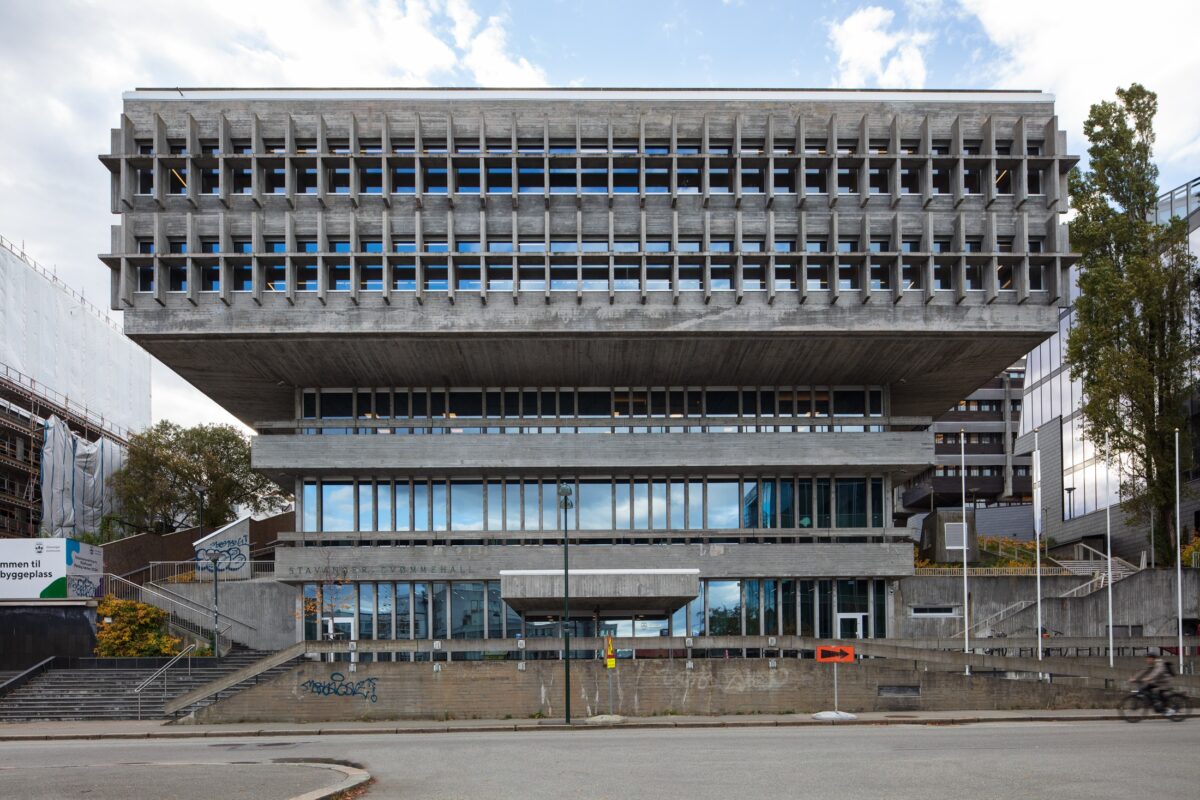
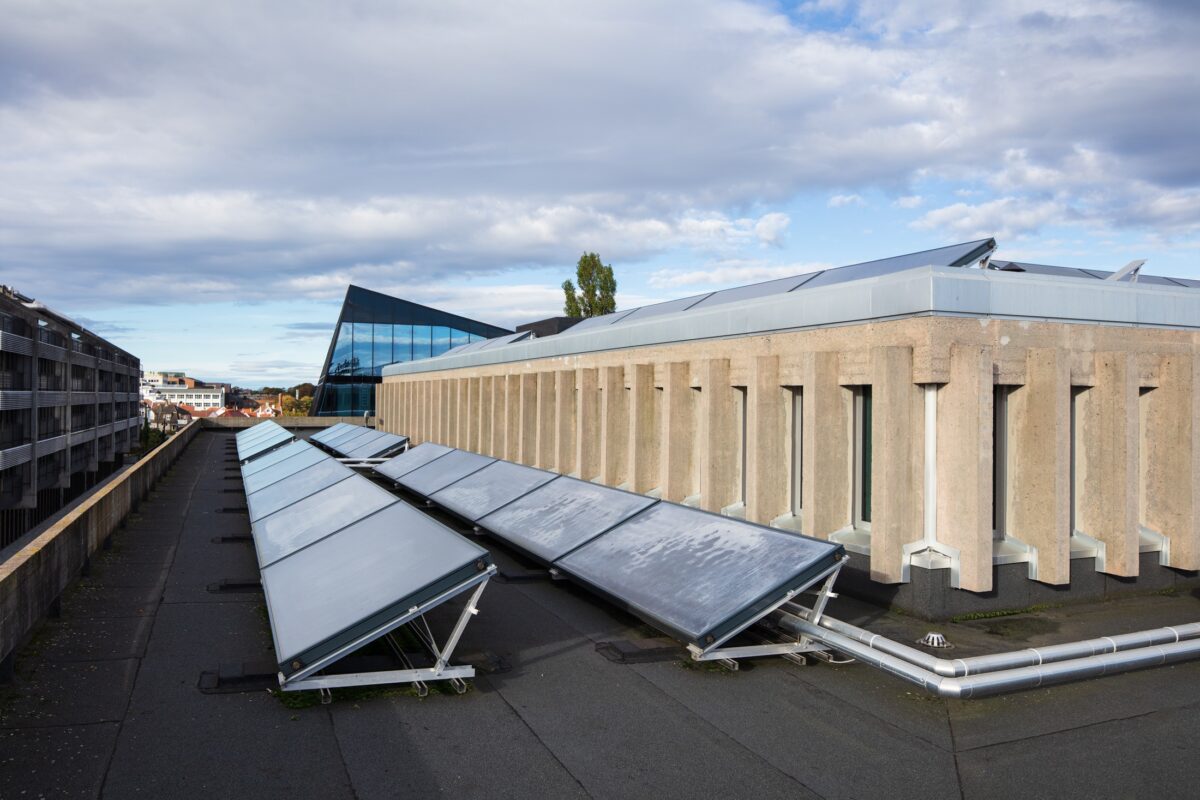
7Solar energy systems on listed buildings
Listing is the strictest form of protection in Norway.
Buildings and cultural environments protected by administrative decision and regulations are considered to be of national value, and the protection must safeguard the cultural heritage values of the building or cultural environment. For buildings that are protected by either administrative decision or regulations, the purpose of the protection is defined in the decision or regulations. This is what cultural environment management authorities must base their assessment on regarding whether a project can be implemented or not.
Exemption
Establishing a solar energy system on a listed building or in a protected cultural environment will always require an application for exemption.
For all listed buildings and facilities, with the exception of those on the Directorate for Cultural Heritage’s list, the county authority is the appropriate authority regarding cultural environment management, and it also makes the decision on exemption.
If one wishes to establish a solar energy system on a listed building or in a protected cultural environment, it is important to contact the county authority at the beginning of the process. A good project is more likely to be achieved when the county authority is involved at an early stage and can provide advice and recommendations.
In some cases, listed buildings are located within areas that are also zoned for protection through the Planning and Building Act. In such situations, it is important that the project is in accordance with the provisions of the zoning plan, and it is important to also apply for permission from the municipality.
The cultural environment management authorities must carry out an overall assessment of the intervention in relation to the characteristics of the listed building, such as size, and culturally, historically and architecturally important values.
Factors that may play a role in the assessment:
- whether the solar energy system can be adapted in a way that safeguards experience values and knowledge values, and that is not contrary to the purpose of the protection
- whether the building structure in general, and the roof structure in particular, can withstand the load of the system
- whether the solar energy system replaces or ruins materials that possess age value and knowledge value
Read more about exemption in ‘Guidelines for exemption processing’: Exemption guide – Directorate for Cultural Heritage (in Norwegian)
The guide for solar energy systems on existing buildings has been prepared by the Directorate for Cultural Heritage. The reference group for the guide has consisted of:
Hanne Windsholt, Cultural Heritage Management Office in Stavanger
André Korsaksel, Cultural Heritage Management Office in Oslo
Nils Anker, Viken County Authority
Lars Petter Bingh, Statsbygg
Norwegian Solar Energy Cluster
Sources and further reading:
Preservation of cultural monuments. Guidance for improving the energy performance of historic buildings. Norwegian Standard NS-EN 16883:2017.
Byggnadsantikvarisk solkartering: Potential för solelproduktion i kulturhistoriske värdefull bebyggelse. Lingfors, Broström, James, Widén at Uppsala University.
Conservation compatible energy retrofit technologies. Part V: Documentation and assessment of integrated solar thermal and photovoltaic systems with high conservation compatibility. Editor: Eleonora Leonardi (EURAC).
EBOB – Photovoltaic systems on buildings. The spread of fire and safety for the fire service. Rise Report 2022:82.
Energy Efficiency and Historic Buildings. Solar Electric (Photovoltaics). Historic England, 2018.
Ensuring place-responsive design for solar photovoltaics on buildings. A good practice guide for designers, manufacturers and installers. Johnny Williams (BRE National Solar Centre) and Kim Hagen (CPRE)
Integrering av solenergi i kulturhistorisk väredfull bebyggelse. Perotti, Dahlberg, Lundgren 2015, developed through the project Solar Energy in Urban Planning 2013-2017.
Norwegian solar power 2022 – domestic and export. Market report for the Norwegian Solar Energy Cluster prepared by Multiconsult.
Photovoltaic BIPV Systems and Architectual Heritage: New Balance between Conservation and Transformation. An Assessment Method for Heritage Values Compatibility and Energy Benefits of Interventions. Polo López, Troia, Nocera. Published in Sustainability 2021, 13, 5107.
Design of photovoltaic systems on buildings. SINTEF Building Research Design Guides, 321.231.
Risk-Benefit Assessment Scheme for Renewable Solar Solutions in Traditional and Historic Buildings. Polo López, Lucchi, Leonardi, Durante, Schmidt, Curtis. Published in Sustainability 2021, 13, 5246.
Photovoltaic technology and fire safety. Rise Report 2018:31
Is solar energy something for your municipality? Advice and guidance for increased expertise – for clients and others aimed at the public sector. Norwegian Solar Energy Cluster, 2020.
Target-based visibility assessment on building envelopes: Applications to PV and cultural-heritage values. Lingfors, Johansson, Widén, Broström, Published in Energy and Buildings, 2019, 204: 1-8
Water-based solar collectors. Function and energy yield. SINTEF Building Research Design Guides 552.455.
